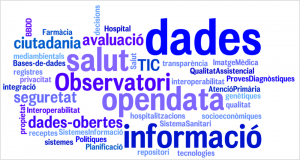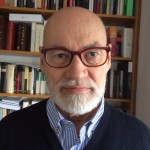 The information generated by the interaction of citizens and the healthcare system keeps increasing in size. Just to get an idea, last year, only in Catalonia there were nearly 45 million consultations in primary care centres, more than 700.000 patients were hospitalised, and over 150 million prescriptions were made. However, there is much more stored in administrative records (diagnostic tests, medical imaging, hospital prescriptions, expenditures, etc.) which are kept and managed in large databases. Government officials are responsible for the safe keeping of this information, and it may use it to improve the quality of healthcare and for healthcare planning purposes.
The information generated by the interaction of citizens and the healthcare system keeps increasing in size. Just to get an idea, last year, only in Catalonia there were nearly 45 million consultations in primary care centres, more than 700.000 patients were hospitalised, and over 150 million prescriptions were made. However, there is much more stored in administrative records (diagnostic tests, medical imaging, hospital prescriptions, expenditures, etc.) which are kept and managed in large databases. Government officials are responsible for the safe keeping of this information, and it may use it to improve the quality of healthcare and for healthcare planning purposes.
Furthermore, advances in the development, interoperability and crosslinking of the different information systems are making it easier to gather a large amount of data that will contribute to better characterise both the general and the patient population, and they are essential to assess the results of healthcare policies.
There is a wealth of opportunities with the increasing amount of data, all of them available in electronic formats and with more quality, and with the better linking between administrative databases. Thus, the information gathered leads to new ways of generating knowledge, especially when multiple data sources are combined (genetic, environmental, socio-economic, etc.) and made available to the citizens.
This turns information into a valuable asset for planning and assessment, but also for third parties, especially in research and in initiatives aimed at enhancing the use of open data.
Open data are a actually a philosophy, as they represent a practice that encourages the free access of data for everyone, without technical limitations. This means that the original files containing the data are available to the public in the most structured way as possible. This enables any computer system to read them, and even to easily develop software based on them.
This trend towards freeing the access to data is parallel to the need of the Catalan healthcare system of managing the whole life cycle of information, from the generation of information to the knowledge dissemination.
Information and communication technologies, and information systems become key strategic allies to achieve the above objectives, and to succeed in the integration, transparency, assessment and accountability by the healthcare system and its different actors.
In the case of Catalonia, the Autonomous Government is committed to a progressive disclosure of the available public data while respecting the privacy, safety and property limitations applicable in each case through the Open Data portal, where all data are indexed and characterised. This is done following the international trends regarding the disclosure of public data, and it counts with the advice from the W3C experts (World Wide Web Consortium).
The Department of Health is thus also joining the initiative of supporting free access to data and public information. This will enable to further advance towards an open government system, based on the values of transparency, service and efficiency, on promoting the generation of value through reusing public information, on easing the internal organisation of the information systems, and on fostering interoperability among the components of the healthcare system.
The Catalan Health System Observatory collaborates in this project by favouring the knowledge about the healthcare sector in Catalonia, and by supplying the citizens with health information to assess the healthcare system itself, to support decision-making and to favour transparency and accountability. With this objective, the Observatory is strongly determined to unveil to the general public all the information regarding their healthcare system. Along with other products, the Observatory publishes on its website a set of health and healthcare activity indicators, consisting of texts, charts and open data files.

Additionally, all the data published in the Observatory reports (Results Centre, Crisis & health, etc.) are also available to the public as open data formats and infographics. Finally, the Observatory website provides a link to the open data portal and a collection of health open data available up to date.
Check the open data available at the Observatory website!

Post written by Montse Mias (@mmias70) and Anna García-Altés (@annagaal).




 The information generated by the interaction of citizens and the healthcare system keeps increasing in size. Just to get an idea, last year, only in Catalonia there were nearly 45 million consultations in primary care centres, more than 700.000 patients were hospitalised, and over 150 million prescriptions were made. However, there is much more stored in administrative records (diagnostic tests, medical imaging, hospital prescriptions, expenditures, etc.) which are kept and managed in large databases. Government officials are responsible for the safe keeping of this information, and it may use it to improve the quality of healthcare and for healthcare planning purposes.
The information generated by the interaction of citizens and the healthcare system keeps increasing in size. Just to get an idea, last year, only in Catalonia there were nearly 45 million consultations in primary care centres, more than 700.000 patients were hospitalised, and over 150 million prescriptions were made. However, there is much more stored in administrative records (diagnostic tests, medical imaging, hospital prescriptions, expenditures, etc.) which are kept and managed in large databases. Government officials are responsible for the safe keeping of this information, and it may use it to improve the quality of healthcare and for healthcare planning purposes.


